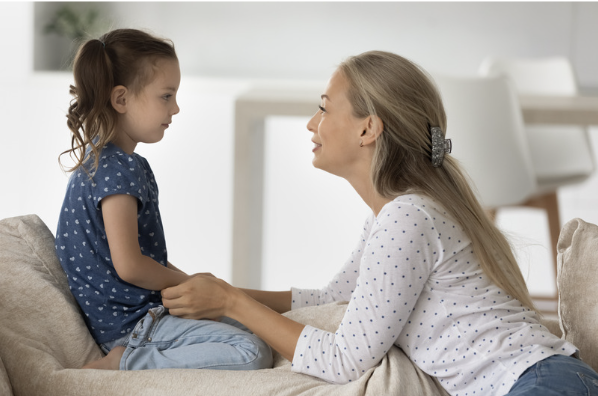Have you ever heard of the term co-regulation?
Co-regulation is defined as warm and responsive interactions that provide the support, coaching, and modeling children need to understand, express, and modulate their thoughts, feelings, and behaviors. In order to understand co-regulation, we must first have a clear understanding of self regulation. Self regulation can be defined as the act of managing thoughts and feelings to enable goal-directed actions, and includes a variety of behaviors necessary for success in school, relationships, and the workplace. Self-regulation skills actually develop by the interaction between supportive adults and the child (parents, teachers, coaches, etc). Self-regulation skills develop in predictable, responsive, and supportive environments. Children need prompt and warm interactions from caregivers in order to learn that they can trust their caregivers to have their needs met. This is the foundation for children beginning to have the space to self-regulate. It is through the process of co-regulation that children learn self-regulation skills.

So, how do we promote co-regulation within the home environment? Here are a couple of tips:
- Provide a warm, responsive relationship by displaying care and affection; recognizing and responding to cues that signal needs and wants; and providing caring support in times of stress.
- Structure the environment to make self-regulation manageable, providing a buffer against environmental stressors. This means creating an environment that is physically and emotionally safe for children, youth, and young adults to explore and learn at their level of development without serious risk to their wellbeing. Consistent, predictable routines and expectations likewise promote a sense of security by providing clear goals for behavior regulation, in addition to well-defined logical consequences for negative behaviors.
- Teach and coach self-regulation skills through modeling, instruction, opportunities for practice, prompts for skill enactment, and reinforcement of each step towards successful use of skills. Like a coach on a sports team, caregivers should first teach skills, and then provide needed supports, or scaffolding, for self-regulation enactment in the moment.
What about the regulation of the caregiver’s. In order to successfully teach self-regulation to children and to provide an environment where co-regulation can occur, caregivers must be tuned into their own self regulation. If your child is dysregulated, it is only natural that this may also serve to disrupt your own regulation. It is important to acknowledge your own disruption in regulation and then choose strategies that will support your own regulation. When your child is dysregulated, try to avoid the temptation to focus on your child’s behavior and focus, instead on being in the moment with them, empathizing with their facial expressions and gestures, and calmly mirroring them. Caregivers must tune into their own thoughts and feelings during a stressful interaction with their children. It is also important that caregivers’ evaluate their own thoughts and beliefs about the feelings of others. Finally, caregivers must use strategies to calm themselves in order to respond to their children with compassion.

0 Comments